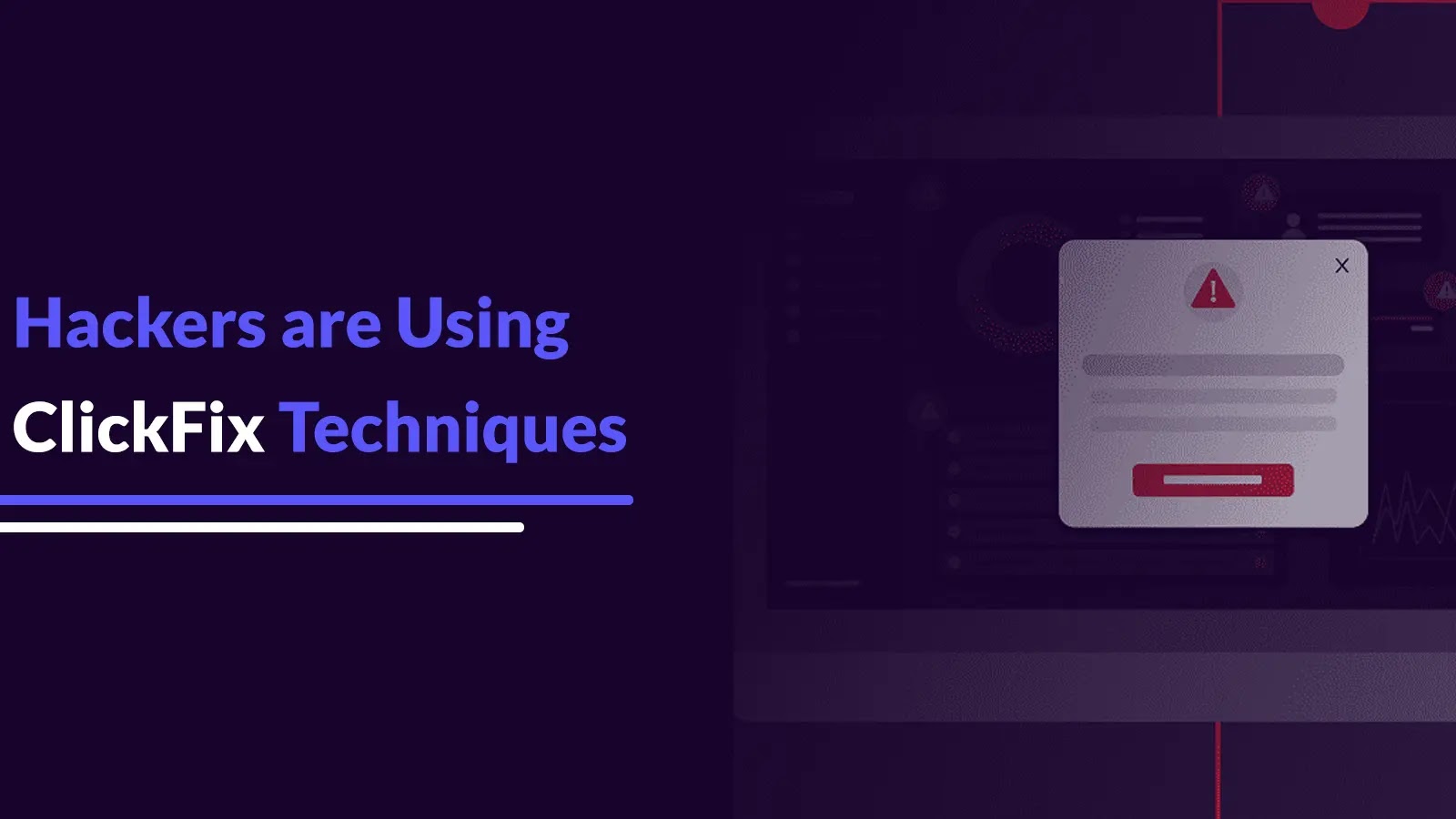
Hackers are Using ClickFix Techniques to Deliver NetSupport RAT, Latrodectus and Lumma Stealer Malware
Malware delivery methods are constantly evolving, and a new, insidious social engineering technique dubbed “ClickFix” has rapidly emerged as a significant threat in late 2024, surging throughout the first half of 2025. Cybercriminals are now leveraging ClickFix to deliver a dangerous trio of malware: NetSupport RAT, Latrodectus, and Lumma Stealer. Understanding this novel approach is critical for cybersecurity professionals to defend against these escalating attacks.
What is ClickFix?
ClickFix is a sophisticated social engineering vector that preys on users’ common desire for quick solutions to technical problems. Instead of relying on traditional exploit kits or malicious email attachments, threat actors employing ClickFix trick users into executing malicious commands under the guise of “quick fixes” for prevalent computer issues. The core mechanism involves clipboard hijacking.
Here’s how it generally works:
- Attackers inject obfuscated, malicious commands directly into the user’s clipboard.
- They then guide the user through seemingly innocuous troubleshooting steps, often instructing them to copy and paste a “fix” into a command prompt or terminal window.
- The user, believing they are applying a legitimate solution, unknowingly pastes and executes the malicious payload from their hijacked clipboard.
This technique bypasses many traditional security measures that focus on attachment scanning or exploit detection, making it particularly effective and difficult to block with conventional defenses.
The Malware Delivered via ClickFix
The attackers utilizing ClickFix are deploying highly potent and damaging malware. The primary payloads identified include:
- NetSupport RAT: A powerful Remote Access Trojan that grants attackers extensive control over compromised systems, enabling data exfiltration, surveillance, and further malicious activity.
- Latrodectus: An advanced, stealthy loader often used as a precursor to deliver more sophisticated malware. Its modular design allows threat actors to adapt and expand their control over infected machines.
- Lumma Stealer: A notorious information stealer designed to exfiltrate sensitive data, including credentials, cryptocurrency wallet information, and other personal data from compromised systems.
The combination of these threats delivered through a social engineering method like ClickFix presents a multi-faceted risk to individuals and organizations.
How ClickFix Evades Detection
The cunning nature of ClickFix lies in its ability to bypass common security layers:
- No Malicious Attachments: Since the exploit isn’t delivered via an email attachment, email gateway security solutions focusing on file analysis may not flag the initial interaction.
- Reduced Reliance on Exploits: Instead of exploiting vulnerabilities (e.g., CVE-2023-XXXXX (Example CVE)), ClickFix leverages user interaction, making traditional vulnerability scanning less effective at prevention.
- Obfuscated Commands: The injected commands are often heavily obfuscated, making it challenging for endpoint detection and response (EDR) systems to immediately recognize their malicious intent before execution.
- Human Element: The technique exploits human psychology, making users themselves the vector of compromise, which is notoriously difficult to prevent with technology alone.
Remediation Actions and Prevention Strategies
Mitigating the threat of ClickFix requires a multi-layered approach combining technical controls with robust user education:
- User Awareness Training:
- Educate users about the dangers of unsolicited “quick fixes” found online or provided by unknown sources.
- Emphasize the risk of copying and pasting commands from untrusted websites or forum posts, especially into administrative tools like Command Prompt or PowerShell.
- Train users to verify the source of any troubleshooting steps and to be suspicious of instructions that involve pasting complex commands into system utilities.
- Clipboard Security:
- Implement endpoint security solutions with advanced clipboard monitoring capabilities that can flag or prevent suspicious operations.
- Consider tools that can sanitise or restrict automatic execution of clipboard contents, though this can impact legitimate workflows.
- Application Whitelisting:
- Restrict the execution of unauthorized applications to only those explicitly permitted. This can limit the impact even if a malicious command is executed, as the malware itself may not be able to run.
- Endpoint Detection and Response (EDR):
- Deploy robust EDR solutions that can detect suspicious process behavior, command-line activity, and network connections associated with NetSupport RAT, Latrodectus, and Lumma Stealer.
- Monitor for unusual activity originating from user-initiated processes, especially those involving command-line interfaces.
- Network Segmentation and Least Privilege:
- Segment networks to limit lateral movement if a system is compromised.
- Enforce the principle of least privilege, ensuring users and applications only have the necessary permissions to perform their tasks, thereby limiting the potential damage of a successful infection.
Recommended Tools for Detection and Mitigation
Leveraging the right tools can significantly enhance an organization’s defense posture against threats like ClickFix.
| Tool Name | Purpose | Link |
|---|---|---|
| CrowdStrike Falcon Insight | Advanced EDR and threat intelligence for detecting sophisticated threats and unusual behavior. | https://www.crowdstrike.com/ |
| Microsoft Defender for Endpoint | Comprehensive endpoint security platform with EDR, vulnerability management, and threat analytics. | https://www.microsoft.com/en-us/security/business/microsoft-defender-for-endpoint |
| Proofpoint Security Awareness Training | User security awareness training platform to educate employees on social engineering tactics. | https://www.proofpoint.com/us/products/security-awareness-training |
| AppLocker (Windows) | Built-in Windows feature for application whitelisting and control over script execution. | https://docs.microsoft.com/en-us/windows/security/threat-protection/windows-defender-application-control/wdac-design-guide/understand-wdac-design-guide |
Conclusion
The emergence of ClickFix as a prominent malware delivery mechanism underscores the dynamic nature of cyber threats. By bypassing traditional security measures through clever social engineering and clipboard hijacking, attackers are effectively disseminating serious threats like NetSupport RAT, Latrodectus, and Lumma Stealer. Organizations must prioritize robust user education, implement advanced endpoint detection capabilities, and enforce strong security hygiene to counter this evolving threat landscape. Proactive defense and informed vigilance are paramount in protecting digital assets from these increasingly sophisticated attacks.





